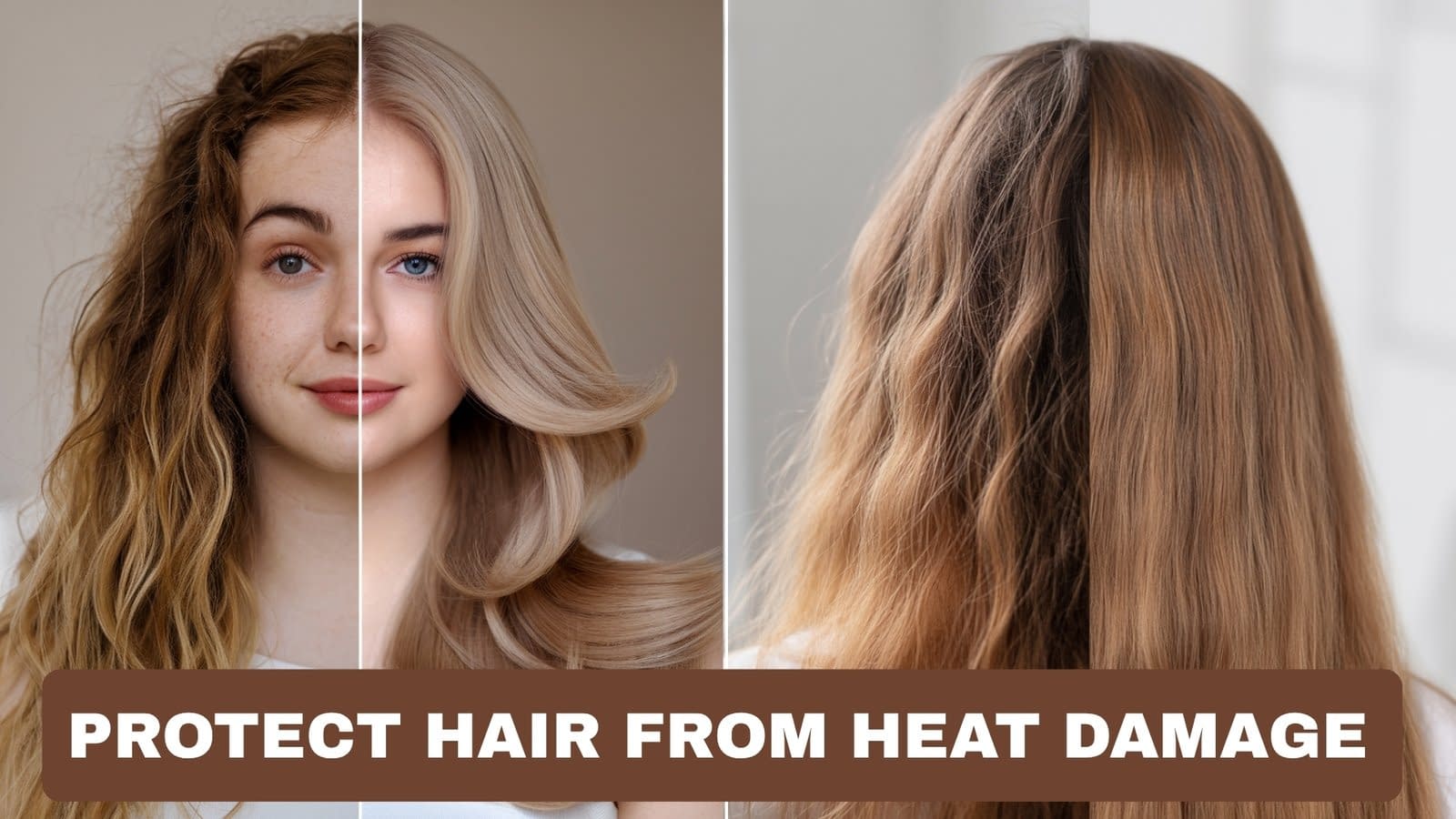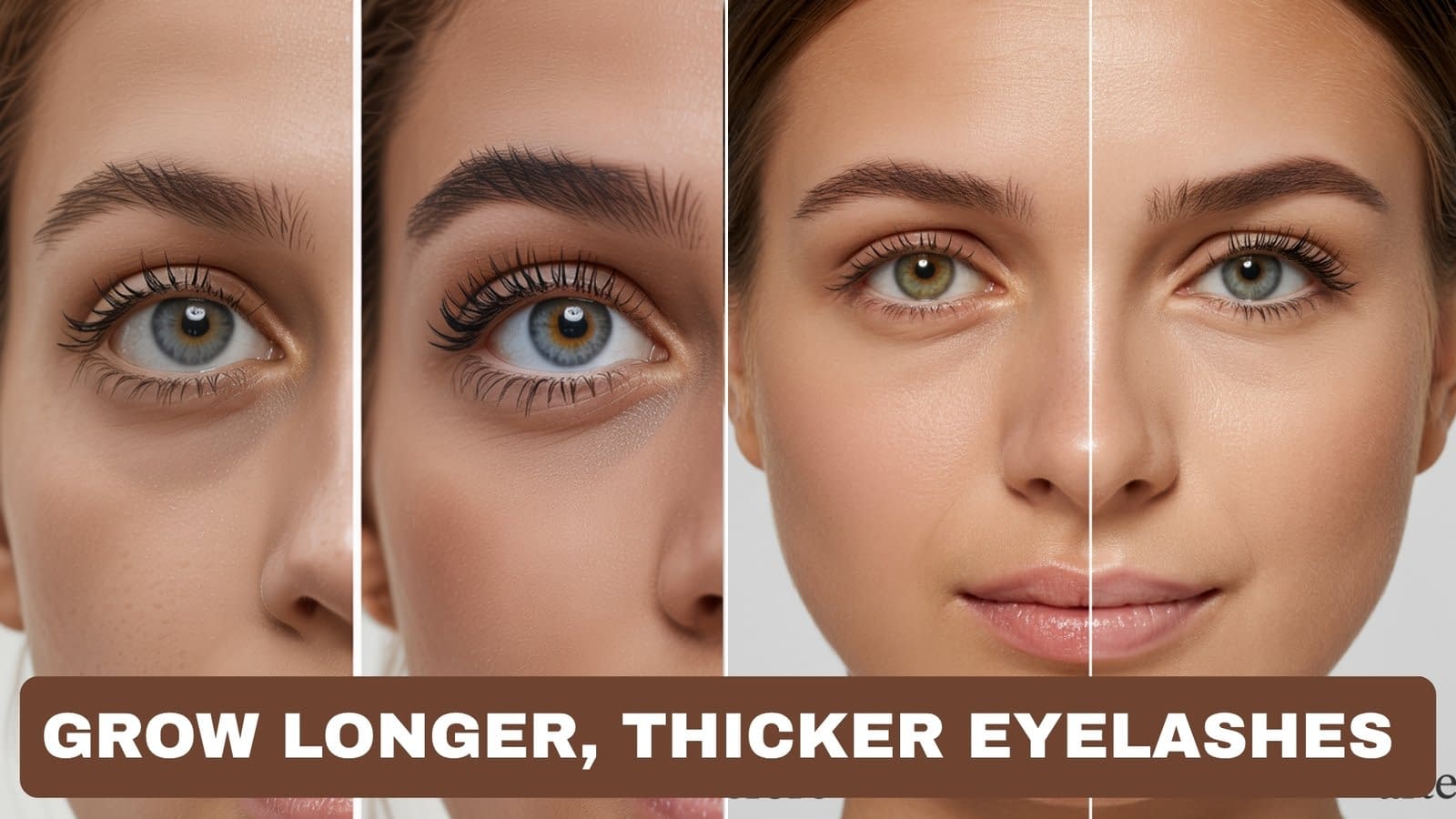Heat styling is one of the quickest ways to achieve sleek, voluminous, or curly hair, but it comes with a price. Frequent use of flat irons, curling wands, and blow dryers can weaken hair structure, cause breakage, and leave strands dry and brittle over time. While styling tools can be convenient and transformative, understanding how to protect your hair from heat is essential to maintain healthy, shiny, and strong locks. The key lies in combining smart habits, the right products, and targeted care routines. In this guide, we’ll walk you through practical tips, step-by-step strategies, and preventive techniques to enjoy heat styling safely.
Why Protecting Hair from Heat Matters
Heat styling works by temporarily breaking down the hydrogen bonds in hair strands, allowing them to reshape. Unfortunately, repeated exposure to high temperatures can strip away natural moisture, damage the cuticle (the outer protective layer), and weaken the cortex (the inner structure). Over time, this leads to:
- Dryness and frizz
- Split ends and breakage
- Loss of natural shine
- Increased porosity, making hair more prone to tangling and damage
Preventive care is essential because once hair is damaged, it cannot repair itself — only new growth will be fully healthy. Protecting your strands ensures your styling efforts don’t compromise overall hair health, and it helps maintain elasticity, softness, and luster.
Understand Heat Damage: Signs to Watch For

Recognizing early signs of heat damage can save your hair from severe harm. Look for:
- Split ends — the tips fray and break easily.
- Dryness — hair feels rough, brittle, or straw-like.
- Breakage — strands snap when brushed or styled.
- Loss of shine — hair appears dull and lifeless.
- Excessive frizz or tangling — cuticle damage causes friction between strands.
- Change in texture — previously smooth hair may feel coarse or wiry.
Tip: Run your fingers along a few strands. If they feel rough or have “hooks” along the hair shaft, it’s a sign of heat stress. Catching these early allows you to implement protective measures before permanent damage occurs.
Choose the Right Styling Tools
Investing in quality tools significantly reduces hair stress:
- Flat irons: look for ceramic, tourmaline, or titanium plates. These materials distribute heat evenly and reduce hot spots that burn strands.
- Curling irons/wands: choose adjustable heat and a non-stick surface. Smaller barrels create tighter curls; larger barrels give soft waves.
- Blow dryers: opt for ionic or ceramic dryers with adjustable heat and airflow settings. Avoid the highest setting unless hair is thick or coarse.
Step-by-step tool selection guide:
- Check the material — ceramic/tourmaline is gentler than metal.
- Look for temperature controls — avoid fixed high heat.
- Read reviews or test the tool for even heat distribution.
- Select the right size/shape for your styling needs (barrel size, brush type).
High-quality tools are an investment, but they reduce the risk of long-term damage and improve styling results.
Use Heat Protectant Products Every Time

Heat protectants form a thin barrier around hair strands, minimizing moisture loss and cuticle damage.
Types of protectants:
- Sprays — easy for fine hair; mist evenly before styling.
- Serums — provide shine and additional nourishment; great for medium to thick hair.
- Creams — slightly heavier; ideal for coarse or curly hair needing moisture.
Step-by-step application:
- Start with damp or dry hair depending on product instructions.
- Shake or mix product well.
- Apply from mid-lengths to ends first, then lightly at roots (avoid greasy roots).
- Comb or brush hair gently to distribute evenly.
- Style immediately using your preferred heat tool.
Tip: Even a thin layer of heat protectant significantly reduces cuticle damage, so never skip this step.
Adjust the Temperature to Your Hair Type
Not all hair types require the same heat setting:
- Fine or fragile hair: 250–300°F (120–150°C)
- Medium/dry hair: 300–375°F (150–190°C)
- Thick/coarse hair: 375–450°F (190–230°C)
Step-by-step temperature adjustment:
- Start at the lowest effective heat and test on a small section.
- Increase gradually if strands are not holding style.
- Avoid repeatedly passing the tool over the same section.
Tip: Lower temperatures reduce cumulative damage, even if styling takes slightly longer. Patience preserves hair health.
Limit Frequency of Heat Styling
Even with protectants, frequent high-heat styling stresses hair.
Strategies to reduce heat exposure:
- Alternate heat-free days: wear natural styles like braids or buns on non-styling days.
- Plan your week: limit blow drying or straightening to 2–3 times a week.
- Multi-purpose styling: style once and refresh with braids, buns, or rollers instead of reheating.
Giving hair time to recover ensures moisture is retained, split ends are minimized, and elasticity is preserved.
Air-Dry When Possible
Letting hair dry naturally minimizes direct heat stress:
Step-by-step air-dry tips:
- Gently towel blot hair — avoid vigorous rubbing.
- Apply a lightweight leave-in or heat protectant if partially using heat later.
- Let hair air-dry 70–80% before finishing with a blow dryer.
- Use a diffuser if enhancing natural curls/waves — reduces direct high heat exposure.
Tip: Even partially air-drying before heat styling can significantly reduce moisture loss and brittleness.
Keep Hair Moisturized and Nourished

Moisturized hair resists heat damage better:
Step-by-step moisture routine:
- Condition after shampoo — focus on mid-lengths to ends.
- Weekly deep conditioning mask — leave 10–20 minutes for hydration.
- Use lightweight oils (argan, jojoba, coconut) sparingly on damp hair.
- Avoid heavy oils near roots to prevent greasiness.
- Leave-in conditioners before styling help retain moisture.
Tip: Healthy, elastic strands withstand heat much better than dry, brittle hair.
Protect Hair Before and After Styling
- Before styling: apply leave-in conditioner or heat protectant, comb gently to detangle, and section hair to reduce repeated passes.
- After styling:
- Lightly mist with a nourishing oil or serum.
- Avoid brushing immediately — let hair cool to lock in shape and reduce breakage.
- Apply hair masks 1–2 times per week to restore moisture and repair minor heat stress.
Consistent pre- and post-care maintains structural integrity and appearance.
Trim Regularly to Prevent Split End

Trimming removes damaged tips that contribute to frizz and breakage:
Step-by-step trimming tips:
- Trim every 6–8 weeks for medium to long hair; every 8–12 weeks for shorter hair.
- Only remove damaged ends — minimal cutting preserves length.
- Consider dusting (small snip of split ends) if length is desired.
Tip: Regular trims prevent split ends from traveling up the strand, reducing overall heat vulnerability.
Consider Heat-Free Styling Alternatives

You can achieve volume, waves, and curls without hot tools:
- Braids or twists: create waves overnight.
- Rollers: foam or velcro rollers for volume or curls.
- Pin curls: secure hair with clips for bouncy curls.
- Buns and knots: loose buns for natural waves.
- Headband curls: wrap hair around a fabric headband overnight.
Experimenting with these methods reduces heat frequency and still allows versatile styling.
Final Words
Protecting your hair from heat damage is a combination of prevention, smart tool use, hydration, and recovery. By:
- Using quality tools
- Applying heat protectants consistently
- Adjusting temperature to your hair type
- Limiting styling frequency
- Keeping hair moisturized
- Trimming regularly
- Exploring heat-free alternatives
…you can enjoy beautifully styled hair without sacrificing health, shine, or strength. Small, consistent habits are more effective than occasional intense treatments. Healthy hair is not just about looks — it’s about giving your strands the care they need to withstand the heat and stay resilient for years to come.








